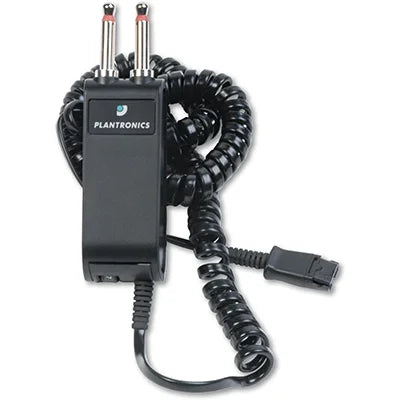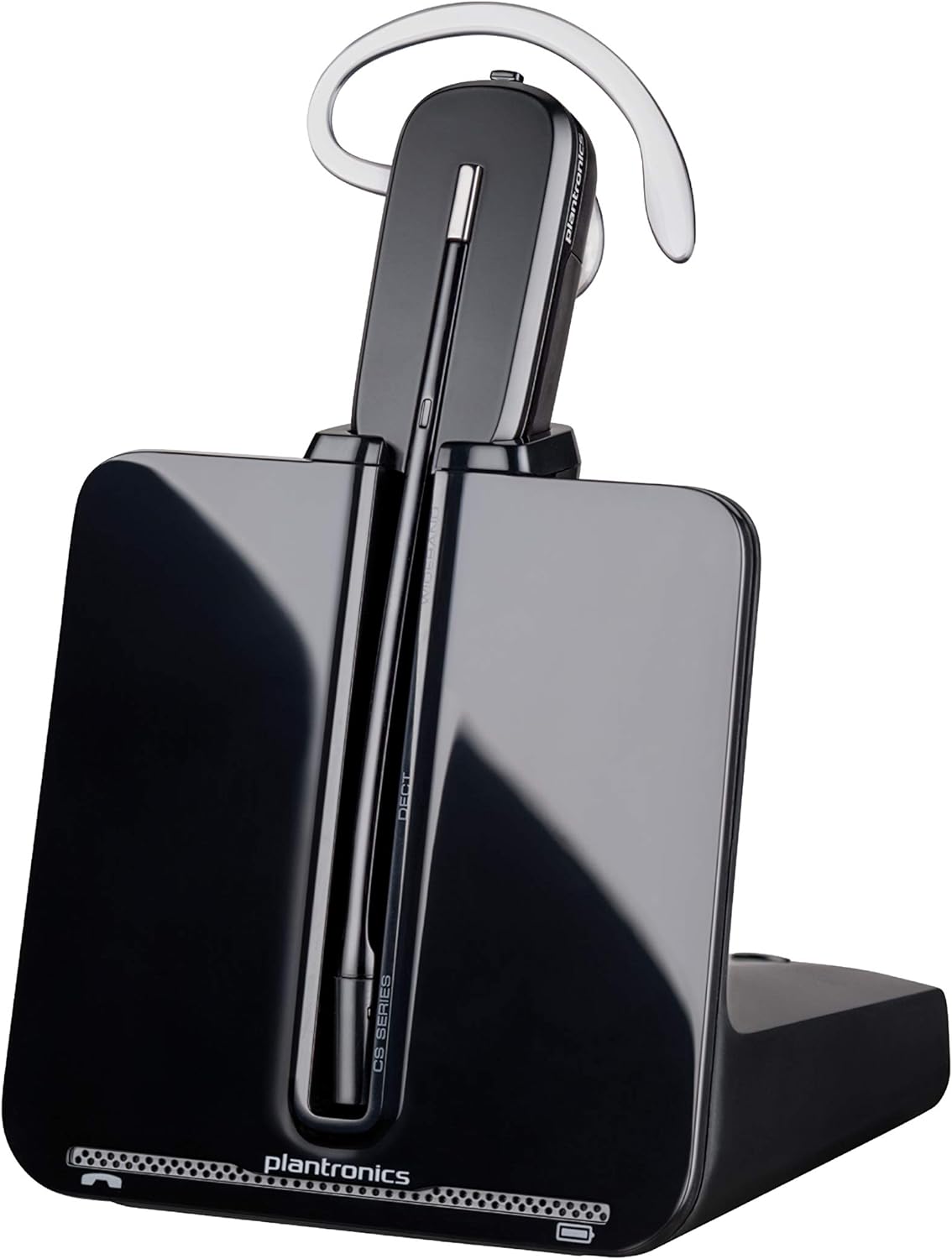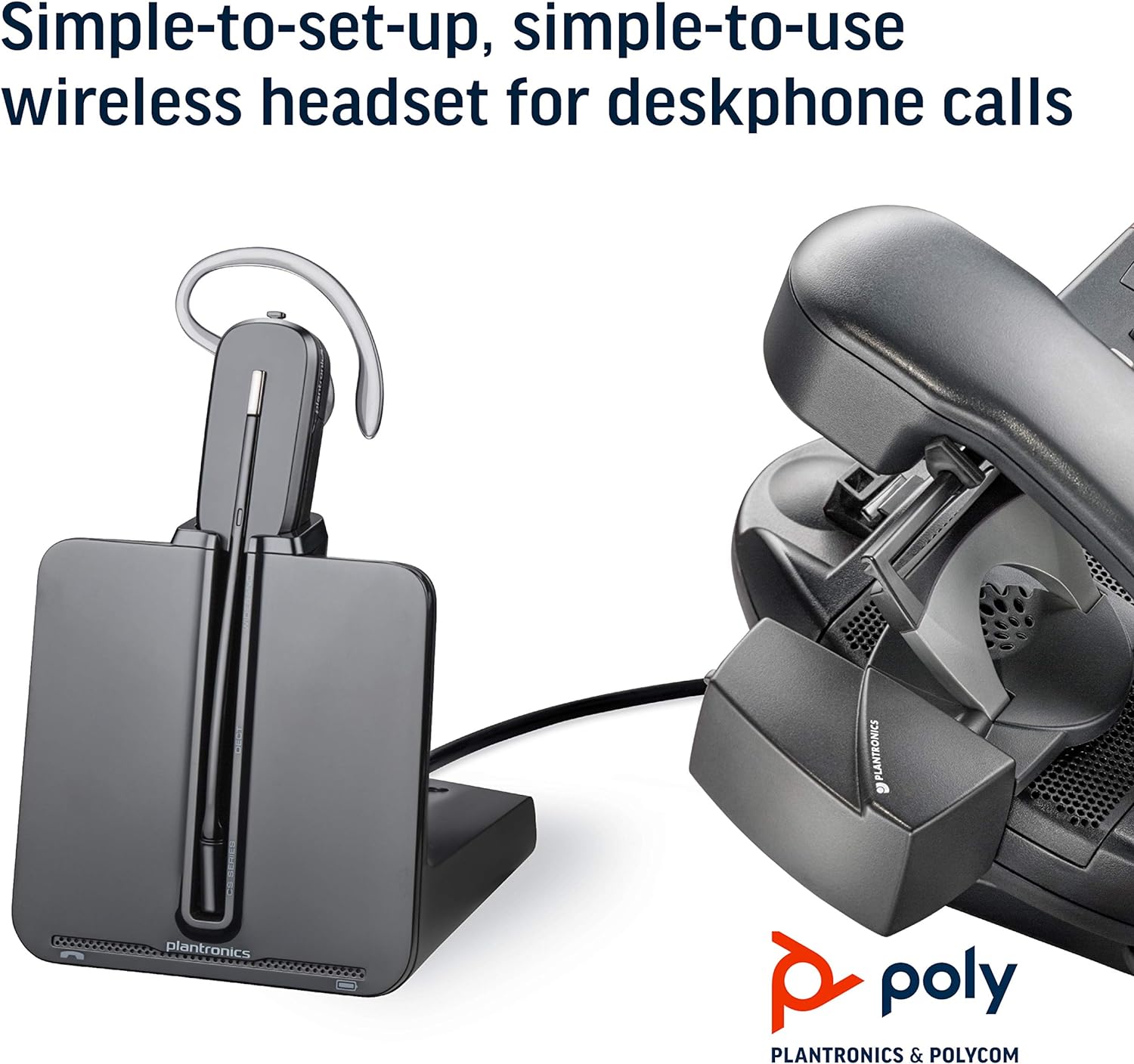In the world of business telecommunications, especially within call centers, operator consoles, and PBX environments, headset connectivity plays a critical role in efficiency and call quality. Among the tools professionals rely on are the Plantronics P10 Plug Prong Amplifier and the Two-Prong Adapter (TPA). Though they may appear similar and even serve overlapping use cases, these two devices are not interchangeable—and understanding their differences can significantly impact your headset system's performance.
Whether you’re upgrading existing hardware or troubleshooting headset compatibility issues, this guide will give you a full breakdown of the P10 and TPA, their use cases, part numbers, compatible phones, and everything in between.

🔌 What is the Plantronics P10?
The Plantronics P10 is a plug prong amplifier designed to connect directly to operator consoles, ACD phones, and PBXs that accept two-prong headset connections. It's a tried-and-true device favored in high-volume communication environments thanks to its plug-and-play reliability, durability, and consistent audio amplification.
🔧 Key Features:
-
10-ft non-detachable Quick Disconnect (QD) cord for H-Series headsets
-
Volume control dial (incoming volume only)
-
No mute switch or compatibility switch (though a separate inline mute is available)
-
Compact and durable design
Unlike other amplifier systems, the P10 doesn’t offer flexibility for switching headset compatibility. It is optimized exclusively for H-series headsets. This laser-focus design makes it simple and effective—but less flexible than modern, software-adjustable alternatives.
🧰 P10 Spare Parts and Accessories
If you're using or planning to deploy P10 units, here are some official Plantronics accessories that can enhance or extend your system:
-
Y-cord Training Adapter (27019-03) – Ideal for side-by-side training sessions
-
In-line Mute Switch (27708-01) – Adds manual mute control during calls
-
10’ Extension Cord (40703-01) – Extends your reach without sacrificing quality
📦 P10 Model Variants & Their Use Cases
While the standard P10 (Part #29362-01) fits most environments, Plantronics created additional versions for specialized use:
-
P10/M2250 (60288-01): Optimized for Nortel M2250 and M1250 consoles
-
P10C (29362-11): Designed for low compression systems
-
P10H (29362-02): Provides higher transmit volume
-
P05 (29362-04): Tailored for carbon plug two-prong phones
Each model addresses specific compatibility or performance requirements. Before purchasing, check the phone system or switchboard model you're connecting to.
☎️ Phones Compatible with the P10
Some of the most common phone systems that support the P10 include:
-
Avaya CallMaster series (I through IV)
-
NEC HA-series consoles
-
Nortel ACD systems
-
Legacy PBX setups with two-prong headset ports
⚠️ Note: These phones usually do not have handsets, so traditional handset lifters will not work.
🧩 What is the Two-Prong Adapter (TPA)?
Unlike the P10, the Two-Prong Adapter is not an amplifier. It is a basic connectivity adapter that allows you to interface any compatible headset-amplifier system—corded or wireless—with a two-prong console or ACD phone. This makes it less limited in terms of headset brand or system requirements.
🔧 Key Characteristics:
-
Purely an adapter – no volume control, mute switch, or compatibility settings
-
Works with any amplifier-equipped headset system
-
Enables flexible headset pairings on older two-prong phone systems
The TPA is especially useful when integrating wireless headset systems or third-party devices with console phones that still rely on two-prong ports.
🔄 P10 vs. TPA – Detailed Feature Comparison
| Feature | Plantronics P10 | Two-Prong Adapter (TPA) |
|---|---|---|
| Type | Amplifier with built-in cord | Basic adapter |
| Audio Control | Volume dial only (incoming) | None |
| Compatibility | H-Series headsets only | Works with any headset system w/ amp |
| Mute Function | No (inline mute optional) | No |
| Cord | Built-in 10’ QD | Requires external amp + cable |
| Additional Power Source | No | Depends on connected amplifier |
| Usability | Plug-and-play | Requires matching components |
| Applications | Avaya, Nortel, NEC | Same, if system allows amplifier passthrough |
| Best Use Case | High-call-volume environments | Custom or wireless integrations |
🛑 Limitations of the Two-Prong Adapter
While the TPA provides more flexibility in terms of headset brands and amplifier integration, it also comes with limitations:
-
Requires external amplification — doesn’t function on its own.
-
Not compatible with systems that need a modified P10 (like P10H or P10/M2250).
-
Cannot be used on phones that require signal boosting or specific mic gain.
Additionally, as many two-prong phones lack a traditional handset, this makes handset lifters or switch controls ineffective when using the TPA in conjunction with a wireless headset.
🛠 Use Case Scenarios
🎧 When to Use a P10:
-
You’re equipping an Avaya CallMaster console in a call center
-
You need a single-device solution with minimal setup
-
You require consistent audio quality for inbound calls
🔄 When to Use a TPA:
-
You’re integrating a Plantronics wireless headset system into a legacy phone
-
You already own an amplifier system and just need a bridge adapter
-
Your PBX phone doesn’t support P10 but has a two-prong input
⚙️ Installation & Setup Tips
For the P10:
-
Plug the P10 into the two-prong port of your phone/console.
-
Connect your H-Series headset to the built-in Quick Disconnect (QD).
-
Adjust the volume dial as needed.
For the TPA:
-
Insert the TPA into the two-prong port of your phone or console.
-
Connect your headset amplifier system into the TPA.
-
Confirm microphone and speaker settings on your amplifier.
🔍 Why Does the P10 Still Matter Today?
Despite the rise of VoIP phones and softphone systems, many institutions like government agencies, airline reservation centers, and healthcare providers still rely on legacy phone systems. For these setups, the P10 remains a dependable and high-quality option for headset integration—delivering better sound fidelity than cheap adapters.
🚫 Why the TPA is No Longer Widely Available
Plantronics (now part of Poly by HP) has discontinued the Two-Prong Adapter, making it harder to source new units. Why? Because fewer modern phone systems rely on analog-style plug prongs—and most professionals are moving to USB, Bluetooth, or RJ-9-based solutions. However, many resellers and refurbished equipment providers still stock the TPA for those needing legacy support.
🧠 Final Thoughts
The Plantronics P10 and Two-Prong Adapter both serve essential but distinct purposes in the professional communication landscape. If you need a standalone solution that delivers audio amplification and simplicity, the P10 is your best bet. If you’re integrating a more customized or wireless system, the TPA can be a flexible bridge—if your phone supports it.
Whether you're maintaining a legacy call center or retrofitting new technology into old hardware, choosing the right interface tool will ensure smooth operation, higher call clarity, and less frustration for your staff.
🏷️ Bonus Tip: Look Out for Refurbished Units
As these components become harder to find, many refurbished electronics providers now offer tested and guaranteed P10 amplifiers and TPAs for organizations maintaining older infrastructure.



